|
[ UrbanRail.Net ] [ Europe ] [ Americas ] [ Asia ] [ Africa ] [ Oceania ] [ News ] [ Books ] [ Links ] |
|
KOCHI
|
| Kerala . India |
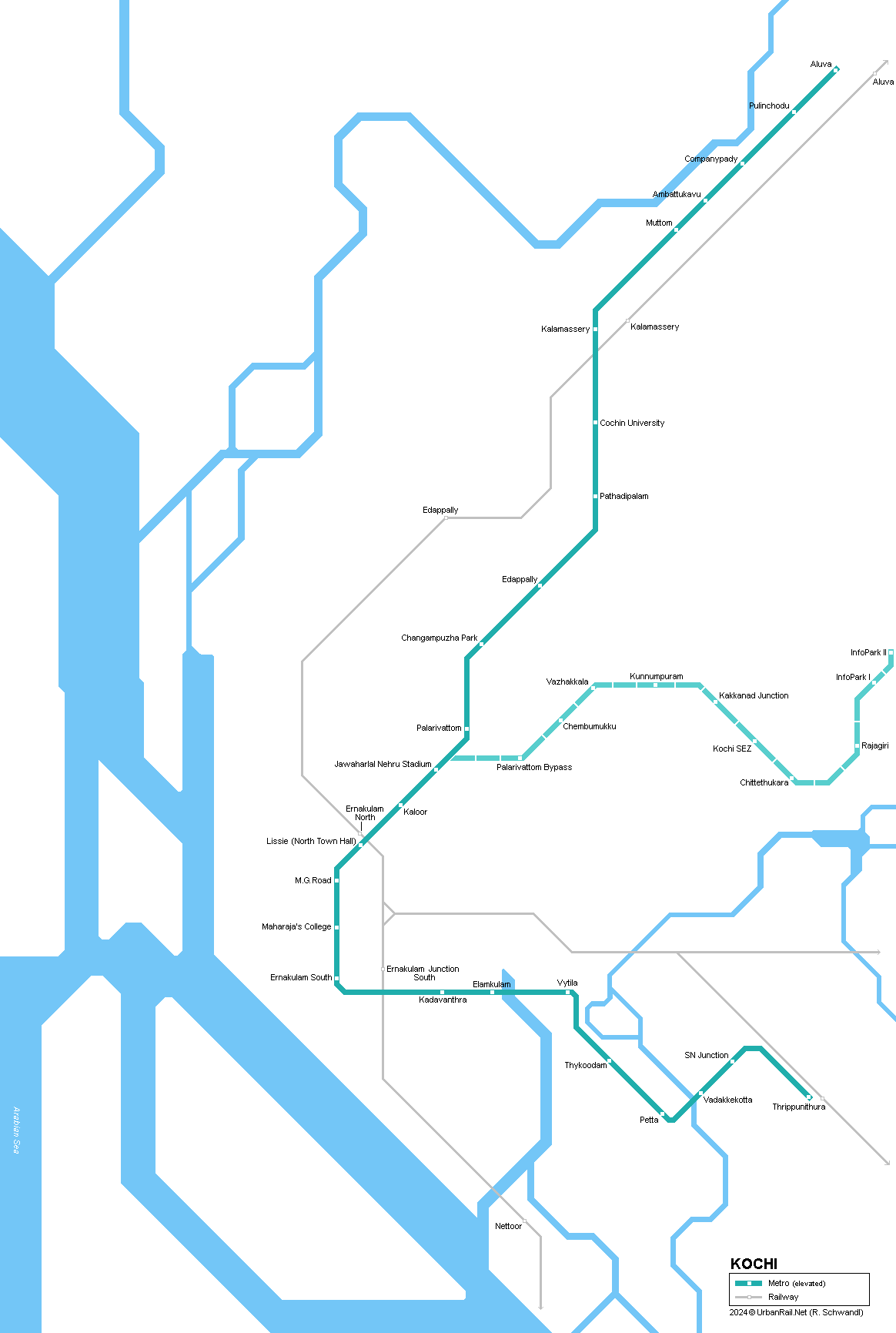
|
[ UrbanRail.Net ] [ Europe ] [ Americas ] [ Asia ] [ Africa ] [ Oceania ] [ News ] [ Books ] [ Links ] |
|
KOCHI
|
| Kerala . India |

| METRO |
|
Kochi (Cochin), part of the district of Ernakulam (3.3 million inh.) in the state of Kerala, by the Arabian Sea, near the southern tip of India. Elevated metro (~27.5 km): 17 June
2017: Aluva - Palarivattom (13 km)
|
| Photos |
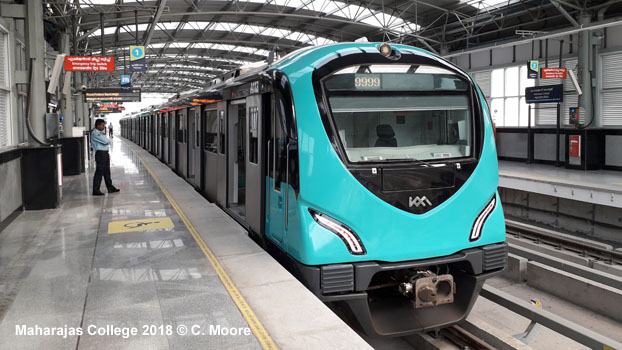
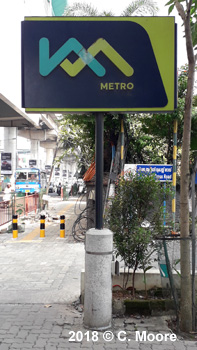
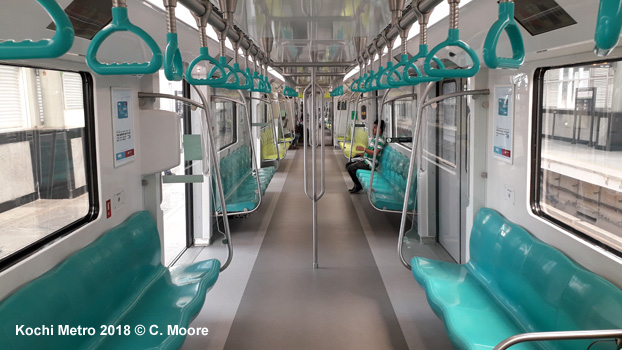
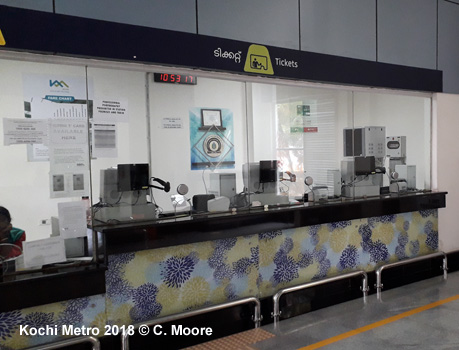
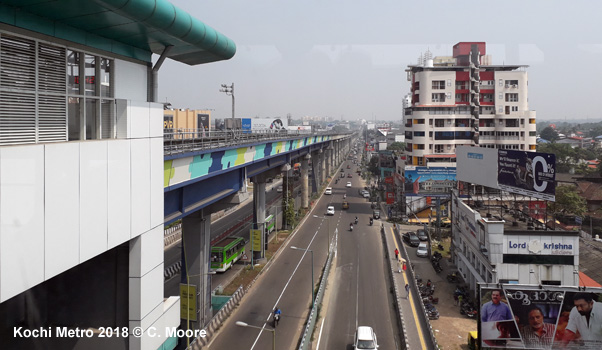
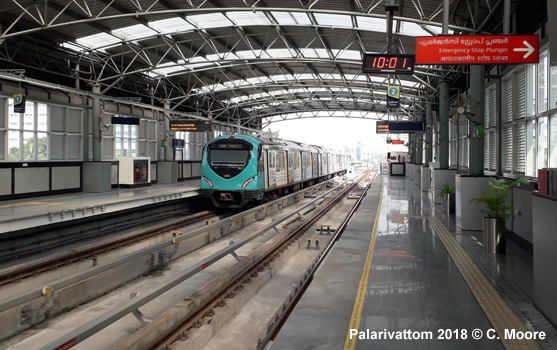
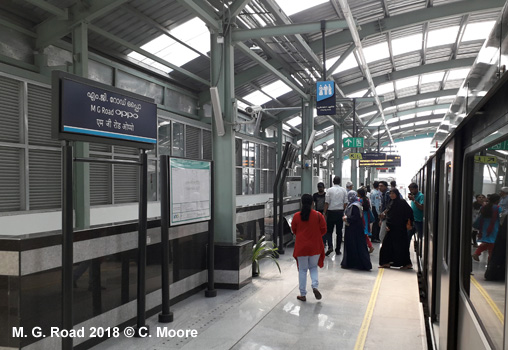
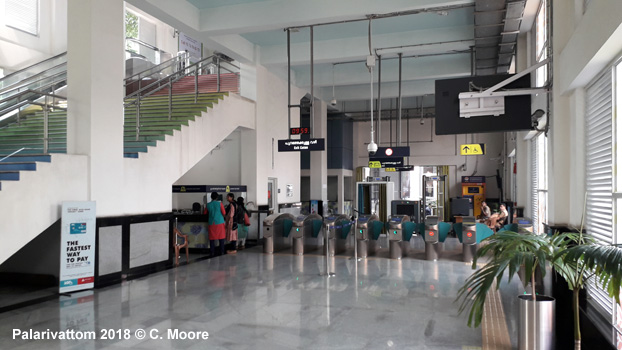
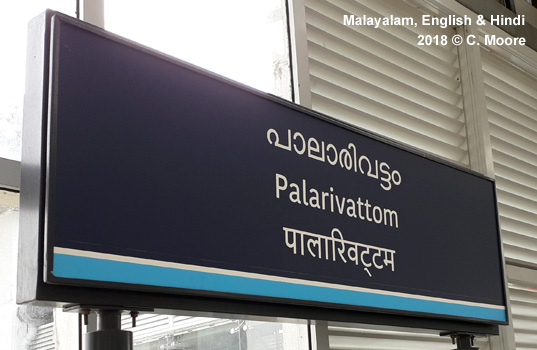
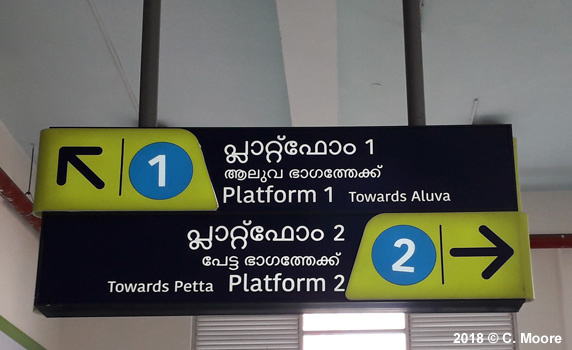
 |
| Links |
|
Kochi Metro Rail (Official Website) Kochi Metro at Wikipedia Kochi Metro Projects (TheMetroRailGuy) |
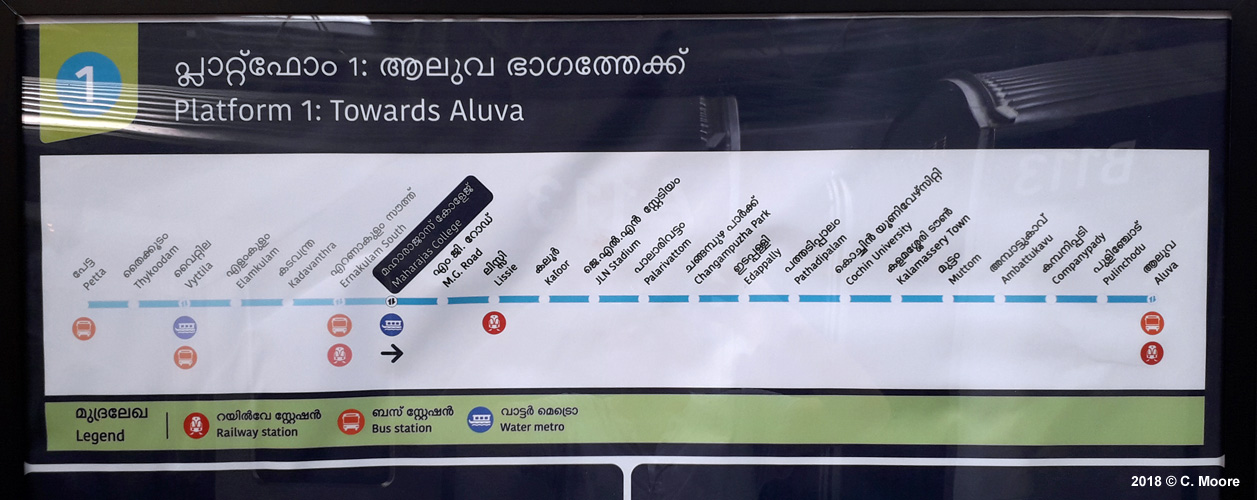 |
|
|
|
In Oct 2018, Craig Moore reports from Kochi: This is a 18.0km elevated Metro running from the Aluva area above the Salem-Kochi Road in a south-westerly direction toward the modern commercial centre of this historic city. At first sight, the Kochi Metro looks like typical India elevated lines with over-large stations and worn, high viaducts - but this system is far from typical. As the route lies above major arteries along its entire length, station entrances lie at either side of the roads and involve crossing elevated walkways. Entrances have a small totem, topped with the lovely blue and green logo and the ground level has ticket office, security scans and barriers. For occasional users, tickets come in the form of a hard paper slip with QR code which is scanned on entry (tickets are also scanned on exit and then placed in a predominant recycle box). The surroundings are bright white but there are also colourful panels on staff offices, lift shafts and pillars. These images are of local fauna and flora and add such a lovely feel to the buildings - even the windows have flower motifs. The first floor is also spacious and provides access to the cross platform walkways under the tracks. Again there is colourful imaginary and the whole area has good directional signage and information boards. These have the brand identity and typeface and, like all signage on the system, is tri-lingual, with Malayayam (similar to Tamil), English and Hindi. The final stairs lead to the side platforms. Stations are high and have masses of space, but are well kept and have open windows to aid natural ventilation in this hot south Indian climate. The platforms are quite narrow but have simple furnishings, a smart strip map and wonderfully pleasant staff (see below). Platforms are built for six-car sets but only three-car services operate at the moment. Although the basic station plan is similar, the 16 stations along the route have differences in design style, all related to Kerala culture. The trains themselves are manufactured by Alstom and use third-rail power. They are metallic (some have an advertising skin) with a light blue frontage and crest shaped window panel. The interior is bright and the light blue and light green brand colours continue in seating and grab handles. There is a section for ladies and for older people on each train. Electronic information is offered through dynamic strip maps which switch between the three scripts, although audio information is only in English. When the doors are closing there is a Chenda (Keralan percussion instrument) drum role that gets louder and more intense until it dramatically stops as the doors finally close. Such a lovely nod to local culture! The ride is fast and smooth and dwell times are minimal. The views are also interesting, especially on the southern section. Trains run from 0600-2200 and have 8min base headways. There is a lovely feel to the system. It is not overly busy (possibly because the fares (10-60 Rupee) are much higher than local bus fares), and there is a very stylish, coherent brand, with the black, light green, light blue colours a constant. Even the underside of the stations above the road are painted in corporate colours. However, the nice feel mainly comes from the ‘liberal’ approach KMRC has taken. When building the system there were significant amounts of planning gain with road junctions beneath the stations improved (some with flyovers). The system also has considerable amounts of solar panelling to minimise its carbon footprint. The recycling mantra is everywhere, and KMRC employs Kudumbashree (all female work groups). Not a male to be seen except for the separately run platform security). Charm comes as standard in India but here in Kochi, the Kudumbashree on the metro have an extra dose! Although small, and not heavily used, this is such a lovely Metro exemplar. |